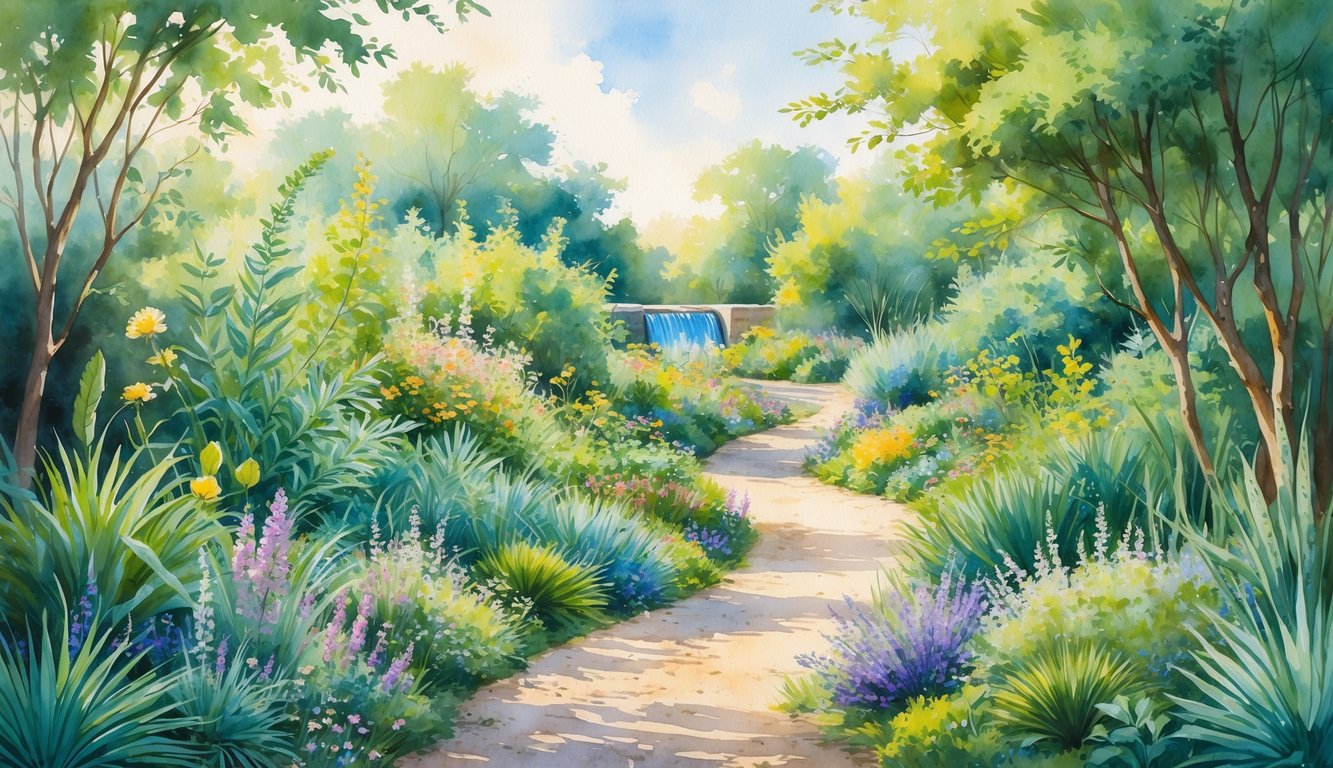
Attracting Pollinators and Enhancing Biodiversity
So, last week I left the hose running all night—oops—and the next morning, my coneflowers were swarming with bees. Three different kinds, at least. Goes to show, no amount of water-saving hacks works like just sticking some native plants in the ground. You get pollinators, which is kind of the whole point, right? Otherwise, you’d just pave it or mulch it and call it a day.
Native Plants for Butterflies and Bees
The only milkweed I haven’t killed by forgetting to water? Came from a local nursery, not the big box. Monarch caterpillars demolished it, which is apparently what’s supposed to happen. I read somewhere (probably on Farmstand or something) that native plants attract more pollinators because they’re actual food, not just decoration. Some butterflies are so picky they’ll only lay eggs on the “real” stuff.
Someone on a forum finally gave me a tip that worked: mix up your bloom times—goldenrod, penstemon, asters—so bees don’t go hungry when the weather gets weird. You ever see a bee on a fancy hybrid rose? Me neither. But Echinacea? Covered every time. Bee balm, too. Bonus: these things barely need any water once they’re settled in, so, less guilt when the hose sits unused.
I probably say this too much, but if you want pollinators, ditch the pesticides. Not because I’m some bug fanatic, but because native bees are basically allergic to everything. Like, put a fan near a candle, then act surprised when it goes out. (That actually happened at my wedding. Not the garden.)
Supporting Local Wildlife Habitats
Want to know what drives me up the wall? Sparrows going full riot for indigo seeds. Quiet yard, then suddenly it’s a Hitchcock movie. Native plants support wildlife in ways you don’t even notice—places to nest, hide, whatever. The biology teacher down the street swears chickadees need hundreds of caterpillars just to feed one nest. I checked. It’s true.
Ever leave a pile of dead stems in the corner? Solitary bees move in. Free bee hotel, no assembly required. All those expensive birdhouses? Not even close to as useful as a stack of grass clippings. Oh, and if you care about muddy shoes: native habitats trap rain, so less mess at the door after storms.
If you’re looking for a technical reason to justify your plant shopping, here’s one: prairie natives like little bluestem and purple prairie clover send roots five feet down. That’s deep enough to bust up clay, stop runoff, whatever. Not pretty, but it works. Honestly, I’ve tried those “eco-lawn” mixes—nothing comes close.
Best Seasons to Plant for Optimal Water Savings
It’s June, and I’m already sweating about what’s going to die in October. Planting natives—oh man, I’ve messed this up so many times. Nobody warns you about roots drowning or frost nuking your new leaves while you’re bragging about saving water. People say natives don’t need much irrigation, but if you plant at the wrong time, you’ll be out there cursing the hose.
Timing Your Planting for Success
Everyone acts like spring is the only time to plant—flowers, shorts, the whole thing. But I heard this native plant society guy say fall is where it’s at for water savings. Soil’s still warm, rain falls when you need it, and the roots get a head start before summer heat fries everything. I tried it, and it actually worked—needed way less watering the first year, even with my sad, sticky clay soil.
But then, of course, you get the online experts fighting about it—somebody says “my milkweed only works in spring!” and suddenly I’m doubting everything. Seasonal guides say true natives adapt to weird weather, so forcing them in July is just asking for disappointment. And don’t bring up landscapers who insist you plant before last frost. I did. Everything died except the dandelions. Typical.